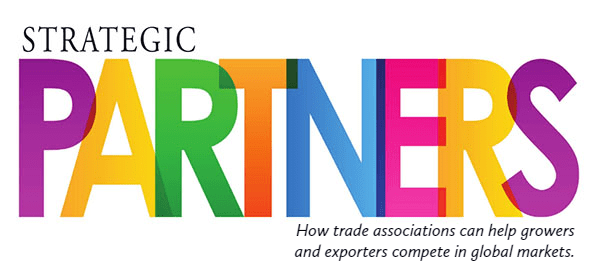This is the first of a multi-part series from Produce Blueprints, in which we explore the role of trade associations in global commerce.
Global trade and commerce are moving and changing faster than ever before.
Companies in Brazil have clients in China and Belgium. Customers in Canada order product from businesses in Chile or Australia. Nowhere is this more evident than in the produce industry.
Each year, the United States imports more than $12 billion in vegetables and $18 billion in fruit to meet demand for fresh produce. Thanks to new technologies and massive improvement in containerized shipping and maintaining the cold chain, more than 50 percent of fruit and nearly 33 percent of vegetables consumed in the United States come from other countries.
Not surprisingly, much of the produce found on supermarket shelves and dinner tables across North America is grown somewhere in Latin America or the Caribbean. Mexico is the No.1 source of fruit, accounting for nearly 40 percent of U.S. imports.
But Chile, Guatemala, Costa Rica, Peru, Honduras, and Ecuador are also among the top ten countries which provide hungry U.S. consumers with fresh fruit and vegetables.
Mexico, Latin America, and the Caribbean account for more than 80 percent of fruit imports. To put this in perspective, Asia came in second with just 11.9 percent of the market.
Canada, too, is a market hungry for produce, both in and out of season. Fruit imports to the True North total upwards of $7 billion annually, with the top five sources being the United States, Mexico, Chile, Guatemala, and Costa Rica.
Vegetable imports, which ring in just shy of $3 billion, come largely from the United States, Mexico, China, Peru, and Spain, although several Latin American countries were among the top ten.
Much of this commerce is facilitated by free trade agreements (FTAs), which ensure the smooth and largely unencumbered movement of goods and services between regions, countries, or continents.
The United States has FTAs with numerous countries across Central and South America and the Caribbean – such as the U.S.-Mexico-Canada Agreement being worked on now – and these accords certainly help pave the way.
However, many companies need support at the micro level before venturing into international trade. In a global business landscape dominated by multinational corporations, what can small and medium-sized producers and exporters do to remain competitive?
The simple answer? Join a trade association.



